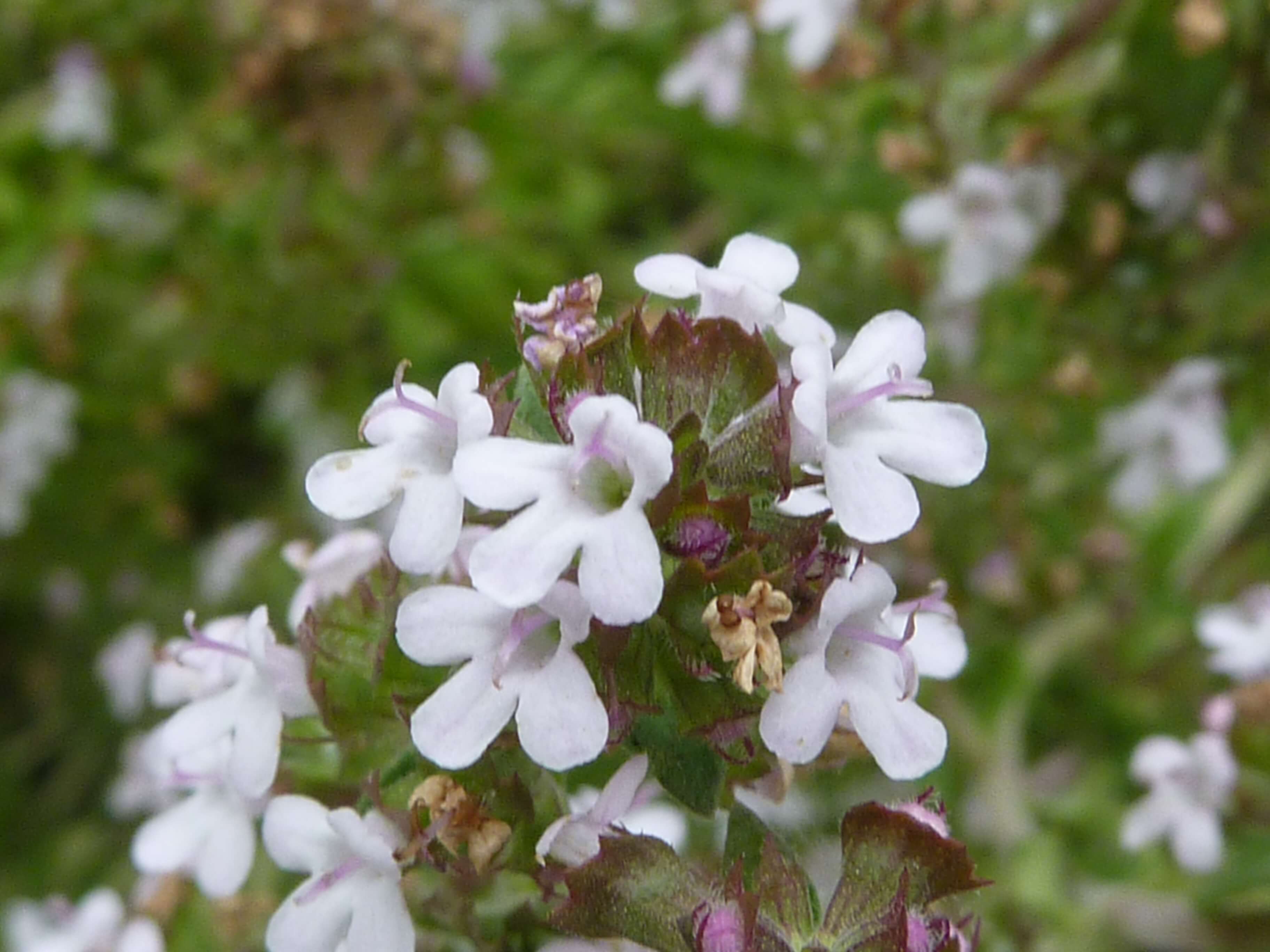

The herb also contains tannins, bitter compounds, and organic acids, which together with thymol and carvacrol offer digestive benefits, as well as antibiotic, antibacterial and antioxidant properties. The mature tops of Flowering thyme contain an essential oil consisting primarily of natural compounds thymol and carvacrol, which give the leaves and blossoms of Flowering thyme their aroma and taste. It is said that honey from the nectar of Flowering thyme can rival that of lavender honey.įlowering thyme contains significant amounts of vitamins A and B-complex, as well as minerals like calcium, potassium and magnesium. Thyme doesn’t lose its aroma and flavor once it flowers, as some herbs tend to do.
THYME FLOWER FULL
The name ‘Flowering thyme’ is used to describe the plant in full bom, when it is at its most aromatic the flavor of the leaves heightened by the presence of the flowers. Botanically known as Thymus vulgaris, thyme is in the mint family. Thyme is a widely used culinary and aromatic herb, that is also grown for its ornamental and edible purple flowers. The tiny, purple blooms of Flowering thyme offer a balsamic scent and citrusy flavor with hints of mint.įlowering thyme is available in the early spring and late summer months. They are often purple, but can be pink or white depending on the variety. The flowers bloom along the stem, nestled in among the leaves. The leaves are very small, only measuring a few millimeters, and grow in clustered pairs at intervals along the stems. The branched and woody stems grow close together, the tops of the stems being more tender than the base. Thyme grows like a small shrub, growing about eight inches in height. If your soil is too heavy or you have a small garden, grow thyme in pots – they will thrive in 15cm (6in) pots filled with a gritty potting medium, ideally soil.Flowering thyme is a mature thyme plant, that has reached the flowering stage. They demand well-drained soil and will rot over winter if the ground is too wet. Plant out in a warm, sunny spot in the garden. Protect plants in pots from excessive winter wet by placing in a rain shadow or a dry, light position and raise onto pot feet to allow the compost to drain freely.

Remove fallen leaves that settle on thyme plants in autumn to prevent rotting. Place a collar of horticultural grit or gravel around plants in the ground to protect the foliage from wet soil.Ĭlip to shape after flowering with secateurs. Ensure plants in pots are not allowed to dry out completely for any length of time during long hot, dry spells. Plants hate too much water and are fairly drought tolerant. When seedlings are large enough to handle, prick out into individual pots. Cover with a light layer of sieved compost and water gently. In early spring fill small pots with seed sowing compost and scatter a few seeds lightly over the surface. Thyme can be brought at ready-grown plants, but is also easy to grow from seed. Malvern Autumn Show - 23–25 September 2022.
.jpg)


 0 kommentar(er)
0 kommentar(er)
